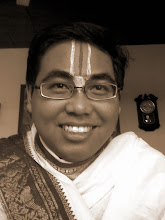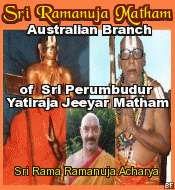
Hindu cosmology associated six of the eight Lokapalas with six of the "planets" of ancient Hindu astronomy: Kubera (Venus), Varuna (Mercury), Yama (Mars), Agni (Saturn), Issana (Moon) and Indra (Jupiter). In addition, the Lokapalas Nirriti and Vayu were assigned stations in the sky that corresponded with certain star signs of Hindu astronomy, called the nakshatras.
By coincidence, during the middle of the ninth century CE, the respective planetary bodies corresponding with six of the eight Hindu Lokapalas happened to rise in the same order in which they appear on the walls of the Shiva temple. This celestial event took place beginning on the evening of December 17th in 840 CE (See chart below), a date that also coincided with the Summer Solstice.
Jupiter (Indra), the Moon (Issana), Venus (Kubera), Mercury (Varuna), Mars (Yama), and Saturn (Agni) rose in succession in the early morning hours, followed by the rising Sun itself. In addition, the sun rose on December 18th in the Hindu asterism Sravana, which is assigned to Vishnu.
Jupiter (Indra) 8:58 PM December 17, 840
Moon (Issana) 10:07 PM December 17, 840
Venus (Kubera) 2:59 AM December 18, 840
Mercury (Varuna) 3:50 AM December 18, 840
Mars (Yama) 4:40 AM December 18, 840
Saturn (Agni) 5:09 AM December 18, 840
Sun 5:24 AM December 18, 840
Thus the temple followed the intricate vashtu injunctions, in perfect harmony with universe, as the temple itself was representing the whole cosmic manifestation.
The relief panels located on the outside-facing walls of the Brahma temple's central cella portray 27 groups of Brahmin saints, or rishis. Dr. F.D.K. Bosch determined that the figures in these panels correspond with a list from the Vishnu Purana which presents the holy men responsible for editing the Vedas over the course of a long-term time cycle called a Manvantara.
"In every third world age (Dvapara), Vishnu, in the person of Vyasa, in order to promote the good of mankind, divides the Vedas, which is properly but one, into many portions. Observing the limited perseverance, energy, and application of mortals, he makes the Veda four-fold, to adapt it to their capacities; and the bodily form which he assumes, in order to effect that classification, is known by the name of Veda-vyasa. Of the different Vyasas in the present Manvantara (4.32 Billion solar years), and the branches which they have taught, you shall have an account.
"Twenty-eight times have the Vedas been arranged by the great Rishis in the Vaivasvata Manvantara...and consequently eight and twenty Vyasas have passed away; by whom, in the respective periods, the Veda has been divided into four. The first... distribution was made by Svayambhu (Brahma) himself; in the second, the arranger of the Veda (Vyasa) was Prajapati....(and so on up to twenty-eight)."
Since the first and foremost editor of the Vedas was Brahma himself, followed by 27 Vyasa in succession, Dr. Bosch concluded that it was no coincidence that the Brahma temple at Prambanan bears the images of 27 groups of rishis on the walls of the Brahma temple's main cella.
What may also be relevant is that, according to certain ancient Hindu astronomy texts, the constellation of the Seven Rishis (Saptarishi) -- which is known as Ursa Major in the western world -- is said to rule for one hundred years over each of the sky's 27 asterisms in succession, taking 2,700 years to complete one complete revolution of the night sky. In this particular case, the Brahma temple presents a model of the revolution of space/time that may be compared even more favourably to the Lokapala model that is represented on the corresponding walls of the Shiva temple at Prambanan.
The Vishnu temple's central cella is decorated with the images of male deities that are flanked to either side by a female figure. Although these figures have not yet been conclusively identified, we might expect them to also have specific identifications that reflect space/time points according to the ancient Hindu scriptures. Perhaps they were various forms of Lord Vishnu and His two consorts, who ruled each month or masa in Vedic calendar.
So these magnificent Trinatha temples represented Three Manifestations of Supreme Lord. We have many evidences that the worship of Trinatha in Nusantara has a horizontal nature. That’s mean, They worshipped the Three Deities on the same level as three folds form of One Supreme Lord, that called by Vaishnavas as Sriman Narayana, as Paramasiva by Saivas, and as Adi Buddha by Buddhists.
One may be objected. If this is the mother temple of all Hindus, why Siva’s Shrine became the prominent one? Why they put Siva at the centre and in the largest temple structure? But if they were mainly Saivas, why most of literature works at that time mainly has Vaishnavite nature. The most authoritative statement came from Javanese Ramayana or what we called Yogisvara Ramayana. There we found conclusive words of the author as he said that his Ramayana was dedicated to the lotus feet of The Supreme Lord Sri Rama, master of the three worlds, and anyone who has read his work should be inspired to worship that very Lord Ramacandra. The Prambanan Temple is the masterpiece of architecture, while the Yogisvara Ramayana is the masterpiece of Javanese literature, of the same age. Even we find a description in Yogisvara Ramayana about one wonderful Siva temple in Lanka of striking similarity with Prambanan temple. The Yogisvara Ramayana, a so called literature of Javanese Vaishnavism has very deep connection with this seemingly Saivite-natured Prambanan temple. Why?




























No comments:
Post a Comment